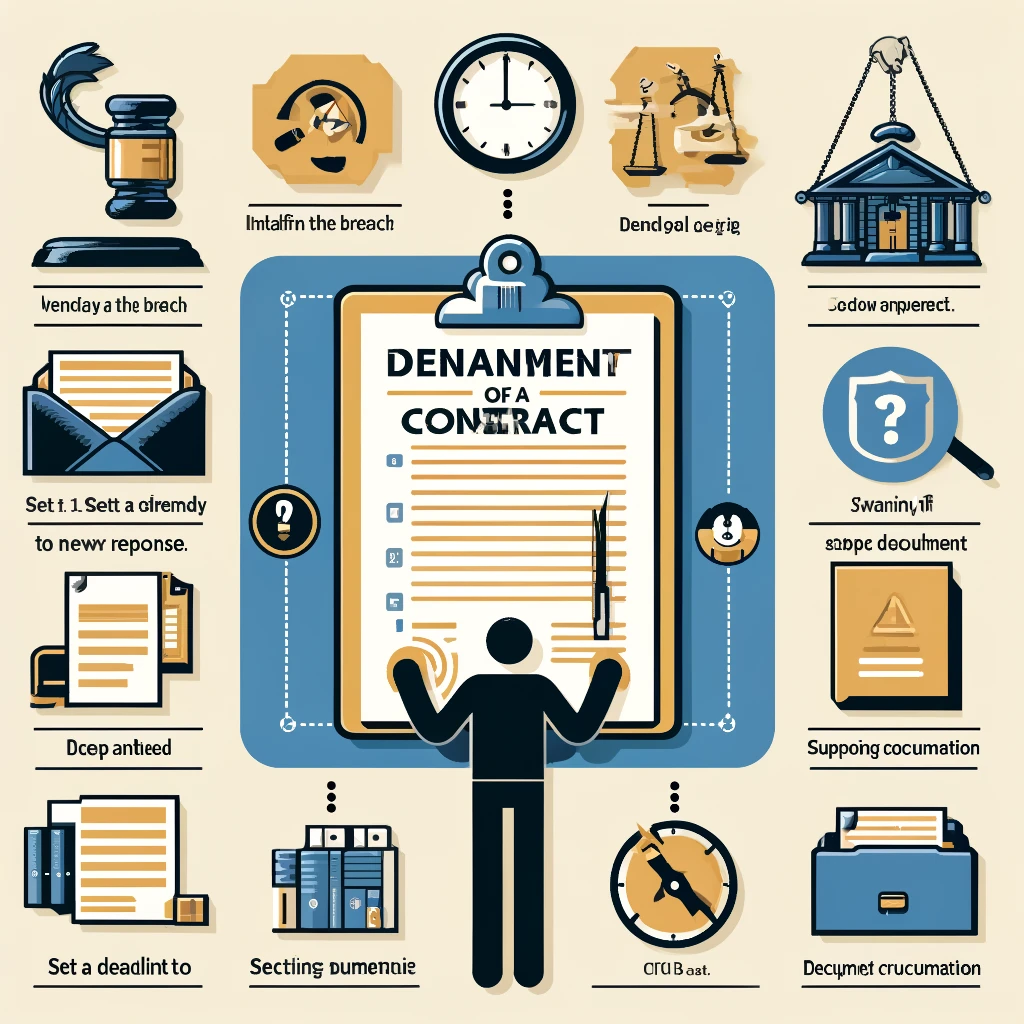Mastering the Art of Writing a Demand Letter for Breach of Contract: A Comprehensive Guide
Navigating through the complexities of contractual disputes can be daunting. A well-crafted demand letter for a breach of contract is a powerful tool that serves as a formal request for rectification before escalating the matter to litigation. This comprehensive guide delves into the nuances of drafting an effective demand letter, illustrating its importance, the key components to include, and legal considerations to keep in mind. By integrating authoritative resources, this article aims to enhance its credibility and serve as a definitive resource for individuals and businesses alike.

Understanding the Demand Letter in the Context of a Breach of Contract
Definition and Purpose
A demand letter for breach of contract is a written document sent to notify the other party of their failure to fulfill contractual obligations and to request specific remedies or actions to rectify the situation. It serves as a preliminary step to resolve disputes amicably without resorting to court proceedings.
For foundational knowledge on contract law, the Cornell Law School's Legal Information Institute offers a primer available here.
The Significance of a Demand Letter
The demand letter plays a crucial role in the dispute resolution process by:
Clearly outlining the breach and its impact.
Providing a formal opportunity for the breaching party to rectify the issue.
Serving as evidence in court if the dispute progresses to litigation.
Crafting an Effective Demand Letter for Breach of Contract
Key Components
1. Detailed Description of the Breach: Specify how the other party has failed to meet their contractual obligations. Reference specific clauses or sections of the contract that have been violated.
2. Remedy Sought: Clearly state what actions you expect the other party to take to remedy the breach. This could include monetary compensation, specific performance, or other forms of rectification.
3. Deadline for Response: Set a reasonable deadline for the other party to respond or remedy the breach. This demonstrates your willingness to resolve the matter efficiently.
4. Warning of Legal Action: Indicate that failure to respond or remedy the breach will result in legal action. This underscores the seriousness of the matter.
5. Supporting Documentation: Attach or reference any relevant documents that support your claim, such as the contract itself, previous communications, and evidence of the breach.
For guidance on writing legal documents, Harvard Law School offers resources through its Writing Center, accessible here.
Legal Considerations
Jurisdictional Laws: Be aware of the laws governing contracts in your jurisdiction, as they can affect the interpretation of your agreement and the validity of your demand letter.
Adherence to Contractual Terms: Ensure that the remedies you seek align with the terms of the contract and the provisions for dispute resolution outlined within it.
Preservation of Rights: Include a statement that the letter does not waive any legal rights or remedies, preserving your ability to pursue further legal action if necessary.
Utilizing Templates and Professional Assistance
While templates can provide a starting point, customizing your demand letter to the specifics of your situation is crucial. Consider consulting with a legal professional to tailor your letter effectively and to understand the potential legal implications of the steps you are taking.
The American Bar Association provides resources on finding legal assistance, which can be found here.

Create & Review Your Contracts 10x Quality and Ease
Lawyer-level AI handles all your contract needs, with real lawyers providing safeguarding support

Conclusion
A demand letter for breach of contract is a critical instrument in the early resolution of contractual disputes. By clearly articulating the breach, the remedies sought, and the consequences of inaction, it offers a pathway to amicable resolution while preserving the option for legal recourse. As contracts form the backbone of many business and personal transactions, mastering the art of writing an effective demand letter is an invaluable skill.
For further reading on contracts and legal dispute resolution, authoritative sources such as the U.S. Courts website provide a wealth of information.

